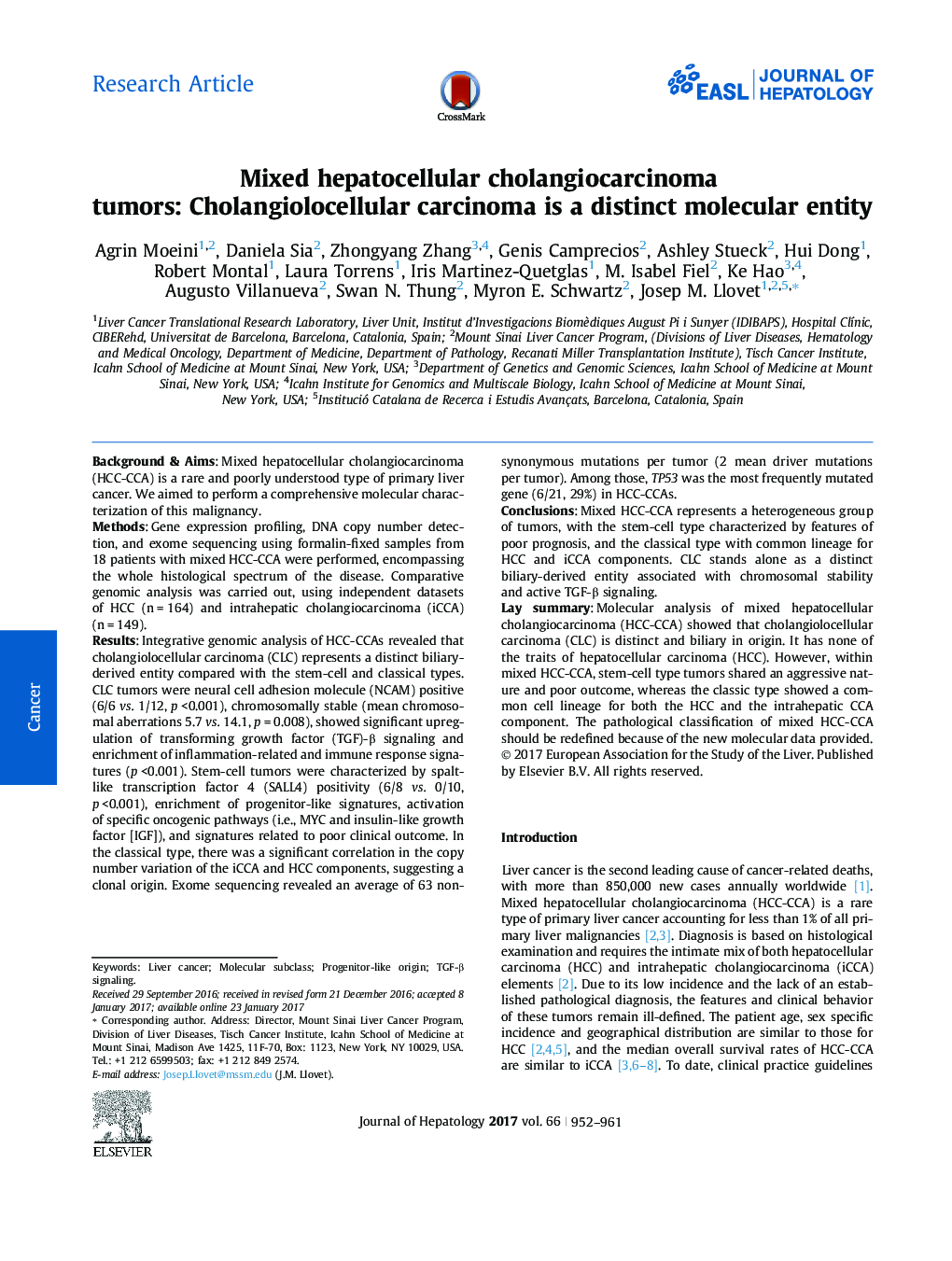| کد مقاله | کد نشریه | سال انتشار | مقاله انگلیسی | نسخه تمام متن |
|---|---|---|---|---|
| 5660756 | 1407497 | 2017 | 10 صفحه PDF | دانلود رایگان |
Background & AimsMixed hepatocellular cholangiocarcinoma (HCC-CCA) is a rare and poorly understood type of primary liver cancer. We aimed to perform a comprehensive molecular characterization of this malignancy.MethodsGene expression profiling, DNA copy number detection, and exome sequencing using formalin-fixed samples from 18 patients with mixed HCC-CCA were performed, encompassing the whole histological spectrum of the disease. Comparative genomic analysis was carried out, using independent datasets of HCC (n = 164) and intrahepatic cholangiocarcinoma (iCCA) (n = 149).ResultsIntegrative genomic analysis of HCC-CCAs revealed that cholangiolocellular carcinoma (CLC) represents a distinct biliary-derived entity compared with the stem-cell and classical types. CLC tumors were neural cell adhesion molecule (NCAM) positive (6/6 vs. 1/12, p <0.001), chromosomally stable (mean chromosomal aberrations 5.7 vs. 14.1, p = 0.008), showed significant upregulation of transforming growth factor (TGF)-β signaling and enrichment of inflammation-related and immune response signatures (p <0.001). Stem-cell tumors were characterized by spalt-like transcription factor 4 (SALL4) positivity (6/8 vs. 0/10, p <0.001), enrichment of progenitor-like signatures, activation of specific oncogenic pathways (i.e., MYC and insulin-like growth factor [IGF]), and signatures related to poor clinical outcome. In the classical type, there was a significant correlation in the copy number variation of the iCCA and HCC components, suggesting a clonal origin. Exome sequencing revealed an average of 63 non-synonymous mutations per tumor (2 mean driver mutations per tumor). Among those, TP53 was the most frequently mutated gene (6/21, 29%) in HCC-CCAs.ConclusionsMixed HCC-CCA represents a heterogeneous group of tumors, with the stem-cell type characterized by features of poor prognosis, and the classical type with common lineage for HCC and iCCA components. CLC stands alone as a distinct biliary-derived entity associated with chromosomal stability and active TGF-β signaling.Lay summaryMolecular analysis of mixed hepatocellular cholangiocarcinoma (HCC-CCA) showed that cholangiolocellular carcinoma (CLC) is distinct and biliary in origin. It has none of the traits of hepatocellular carcinoma (HCC). However, within mixed HCC-CCA, stem-cell type tumors shared an aggressive nature and poor outcome, whereas the classic type showed a common cell lineage for both the HCC and the intrahepatic CCA component. The pathological classification of mixed HCC-CCA should be redefined because of the new molecular data provided.
213
Journal: Journal of Hepatology - Volume 66, Issue 5, May 2017, Pages 952-961
